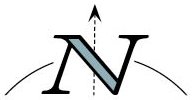« Lehman Launches Coverage of Central European Media Enterprises | Main | Interesting Datapoint Favoring Growth »
January 04, 2006
January 2006 Model Signals
I received fresh signals from Northlake's Market Cap and Style models yesterday that resulted in swapping all value exposure to growth at the open of trading. There were no changes to the Market Cap reading which remains at Mid Cap. The shift to growth occurred after three consecutive months of value signals, a period during which value lagged growth. Current holdings in the ETF rotation portion of client portfolios are the S&P 400 Mid Cap (MDY), the Russell 1000 Growth (IWF), and the Russell 2000 Growth (IWO). Portfolios maintain an equal commitment to each model but within the Style allocation own $3 in IWF for every $1 in IWO....
The shift from value to growth occurred because the prior month's value reading was a weak one and recent performance trends have favored growth. These models score 0 to 100 and the closer they are to the extremes, the stronger the signal. The value reading last month was in the upper 30s, while anything above the mid 40s favors growth. This meant a small shift in any of the underlying factors could have been enough to tilt slightly into growth territory, and that is exactly what happened. The factor that shifted was the trend indicators. These technical indicators measure intermediate trends ranging from 2 to 12 months. They are overweighted in the hope that they will improve the timeliness of a model that otherwise relies on slower moving economic, stock market, and interest rate indicators. The trend indicators are picking up the outperformance of growth that began in May.
Looking back on 2005, Northlake's models proved modestly helpful to the goal of beating the S&P 500 benchmark. Calculating monthly price-only returns based on the S&P 500 (SPY), MDY, and the Russell 2000 (IWM), the Market Cap model earned about 6.5%, comfortably ahead of the S&P 500. The biggest gains were made early in the year when energy stocks and utilities were performing well. I don't have good data on why the Mid Cap varies relative to the S&P 500 but I can tell you from watching it minute-by-minute and day-by-day that there seems be a direct correlation between the relative performance of the S&P 400 and those sectors. I believe the energy and utility exposure in the S&P 400 has a lot more exposure to oil services, natural gas, and independent producers than the S&P 500 and these are notoriously volatile subsectors of the energy stock universe.
The Style model helped in 2005 but only because clients maintained a disproportionately high exposure to small cap during the year by equally dividing my exposure between the Russell 1000 Large Cap and 2000 Small Cap growth and value indices until October. Using this approach allowed portfolios to leverage the more accurate signals from the Market Cap model and beat the S&P 500 by about 150 basis points. However, had clients used broader index ETFs like the Russell 3000 Growth (IWZ) and the Russell 3000 Value (IWW), where the holdings are overwhelmingly in large cap stocks, there would have been no incremental performance from the Style model.
Posted by Steve Birenberg at January 4, 2006 11:21 AM in Models


